Ripstiks are more like a fun novelty while skateboards mean business. Ripstiks are awkward, hard to control, useless in a skate park, and fun for a few hours only. On the other hand, skateboards are versatile, good for transport, and you can do all kinds of tricks out there.
Let’s dig deeper and see how they compare and what will be best for you!
Ripstik:
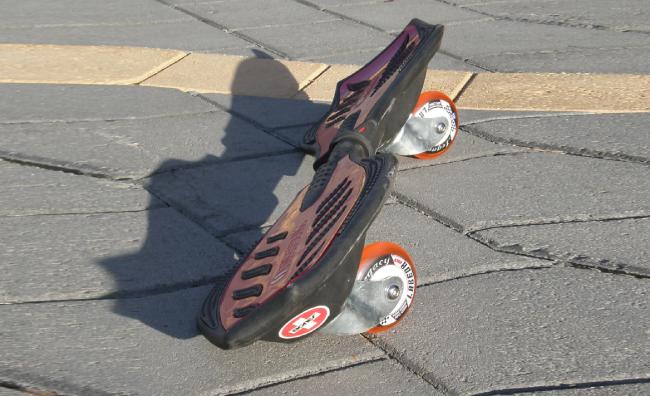
Pros:
- Cheaper than high-end skateboards
- Good for people who want to exercise
- Easier to turn, which is good for windy roads
- Good for occasional use
Cons:
- Awkward look
- No customization options
- Not for tricks
- More physically demanding
Skateboard:
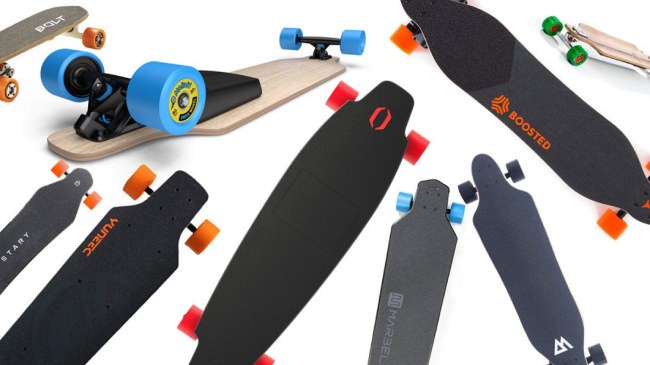
Pros:
- Entirely customizable
- More options mean more ways to ride
- Best for doing tricks
- Both casual and hardcore options for any rider
- Not very physically demanding
Cons:
- Can be expensive
What Is the Difference Between a Ripstick and a Skateboard?
1. Look
Ripstik
A Ripstik only uses two wheels connected to casters angled 30 degrees attached to the bottoms of two decks. The two decks are held together with a metal rod with a powerful spring running through it.
Skateboard
Skateboards are made up of four wheels connected with two metal parts called under the deck. Grip tape is added to the top so that your feet don’t slip from the deck.
2. Wheel size and material
Both skateboards and Ripstiks use the same material for their wheels – polyurethane.
Ripstik
A Ripstik’s wheel size is 2.6” on average, so it’s a bit bigger than a skateboard wheel. These wheels are usually quite hard, coming in at around 88a in durometer.
Skateboard
The average wheel size is 1.96? to 2.12?. These wheels are also measured for hardness, called durometers. The scale ranges from 1A, which is the softest, to 100A which is the hardest.
3. Deck width
Ripstik
A Ripstik comes in a few different models, each with its own dimensions. For instance –
Ripstik Classic – 33.5? x 8.7? x 5?.
Ripstik Ripster – 27? x 9? x 4.5?
Ripstik Air – 34? x 9? x 4.5?
Skateboard
Skateboards come in many different variations, designs, and sizes. The standard skateboard deck length mostly ranges from 28” to 33” while the width is usually between 5” and 6”.
4. Foot placement
Ripstik
A Ripstik requires you to have one foot on each deck. It’s impossible for a Ripstik to move with two feet on one deck.
To get moving, you will need to place your non-dominant foot on the Ripstik and push your body using your dominant foot. Next, place your dominant foot immediately on the nose of the board.
Skateboard
A skateboard has 3 main foot placements: Natural, Nollie, and Switch.
Using the Natural stance, if you have your left foot on the front, you’re a regular rider. If you have your right foot at the front, you’re a “goofy” rider.
The Nollie stance is like the natural position, but your feet are pushed forward, and your front foot is on the nose of the board instead of on the trucks.
The Switch stance is simply the reverse of the Natural stance. Although the idea is simple, it’s actually quite difficult to pull off correctly.
5. Momentum
Ripstik
A Ripstik uses the movement of your hips and legs where you have to twist them in order to achieve movement.
This will be challenging for newcomers since it requires a bit of physics know-how to achieve smooth riding.
Skateboard
A skateboard is simple and straightforward. Use your dominant foot to propel yourself forward, balancing on the board while the wheels do all the work.
Of course, your speed and momentum will be determined by how much you can push with your dominant foot.
6. Flexibility
Ripstik
A Ripstik is a combination of metal and plastic – two materials that aren’t very flexible. The board can’t bend with a metal bar between the two decks.
Skateboard
Skateboards are made from layers of wood, often maple or bamboo. These woods are very flexible, so they are used in tandem with carbon fiber to create a nice flexible board.
The flexibility is measured by ply, meaning how many layers of wood there are.
Most skateboards are 7ply, allowing both toughness and flexibility.
7. Control
Ripstik
Since you are using your full body to use a Ripstik, it allows for better control of motion.
Skateboard
A skateboard is easy to lose balance on if you’re new and your board can still move after you are off of it, making a skateboard a little more dangerous.
8. Doing jumps
Ripstik
A Ripstik is more difficult since you need to balance on the board with both of your feet. An ollie is almost the same but requires much more foot control than a skateboard.
Skateboard
The design of the skateboard makes jumps easier, with grip tape allowing you to stay on the board better and ball bearings in the wheels to help with the impact of landing.
9. Doing super tight turns
Ripstik
With better control, a Ripstik is able to take turns much sharper than a skateboard, even for new riders.
Skateboard
You can still make some tight turns on a skateboard but they won’t be as sharp as a Ripstik and you’ll need a lot of practice to pull it off.
10. Going fast
Ripstik
A Ripstik is easier to go fast with because you are using your whole body strength to move it.
Skateboard
Both a skateboard and a Ripstik can get you going fast, around 12 to 18 mph at top speed.
A skateboard requires strong legs to go fast, which takes training.
11. Taking foot off
Ripstik
A Ripstik requires both of your feet on at all times, both for balance and motion.
Skateboard
Using a skateboard requires only one foot to move, so you have to take your foot off sometimes.
12. Learning new tricks
Ripstik
A Ripstik, on the other hand, is hard enough to master movement. While it is possible to perform grinds and other tricks on a Ripstik, it is not recommended.
In fact, most of the riders who are able to learn how to do tricks on a Ripstik usually learned how to do them on a skateboard first.
Skateboard
For tricks, a skateboard is your tried-and-true method for any trick you want to pull off. From ramps to rails and skate parks to the streets, a skateboard has you covered.
The entire range of tricks in skating started with skateboards, which shouldn’t be a surprise since they were the first kind of board available to the youth to have some thrilling time outdoors.
13. Transportation
Ripstik
A Ripstik isn’t a practical means of transport and even if you try, this will be much more physically demanding than a skateboard.
Skateboard
A skateboard, or some form of it like a longboard, is a great option to get around. Most places don’t mind if you are carrying your skateboard, making it convenient to travel with.
14. Riding different terrains
Ripstik
There are customizable wheels but you need to buy them separately. Saying that, out of the box, the skateboard is the better option for handling different terrains.
Skateboard
With a skateboard, you can change your wheel size and weight to better suit riding on the street or riding around in skate parks.
15. Practicality
Ripstik
The wheels are the only parts you can replace.
Skateboard
The different parts of a skateboard are all customizable and replaceable individually.
16. Chances of falling down
Ripstik
A Ripstik needs balance to operate and if you master the movement, your chances of falling are actually lower than a skateboard. You are always using both of your feet, which gives you better balance.
Skateboard
A skateboard requires some strength in the legs to keep balance and motion, and it requires training.
17. Fun to ride
Both are fun options to ride on.
Ripstik
A Ripstik is great for an occasional ride and that too not for long.
Skateboard
A skateboard is better if you want to learn tricks and do some serious skating that you can boast about afterwards.
When should you ride a ripstik?
- A Ripstik is a good way to do some exercise and make short trips occasionally. Some schools in the UK have even started using Ripstiks as part of their Physical Education curriculum
- If you are an experienced skateboarder looking for a new kind of experience
- If you like having a continuous motion during riding
- Due to a lot of limitations, riding a Ripstik is fairly safe, but you should always practice caution when skating
- Really only recommended for kids as a toy
When should you ride a skateboard?
- If you want to learn how to do tricks, the skateboard is the best option
- Travelling on a skateboard is much easier than on a Ripstik
- If you want to build something from scratch, you can buy each individual part of a skateboard
Ripstik vs skateboard: Which one should you learn first?
Skateboarding involves a lot of foot movements around the board, while Ripstiking involves a lot more ankle control and hip movements.
With that being said, skating is the way to go as a beginner so you can see how it feels to skate on a board and learn how to balance and move around.
However, if you have somehow picked up Ripstiking first, the experience will still be useful when you’ll be making your jump to the four wheels.
FAQs:
1. Is Ripsticking good exercise?
Ans. Riding a Ripstik leads to a 233% greater use of energy than walking, according to a study done by the University of Salsford in the UK.
2. Does a Ripstik help lose weight?
Ans. They are a great exercising tool if used regularly, and they’re even being used in some PE classes in the US and the UK.
3. How fast can a Ripstik be?
Ans. A Ripstik can go between 10 and 13 miles per hour if used correctly.

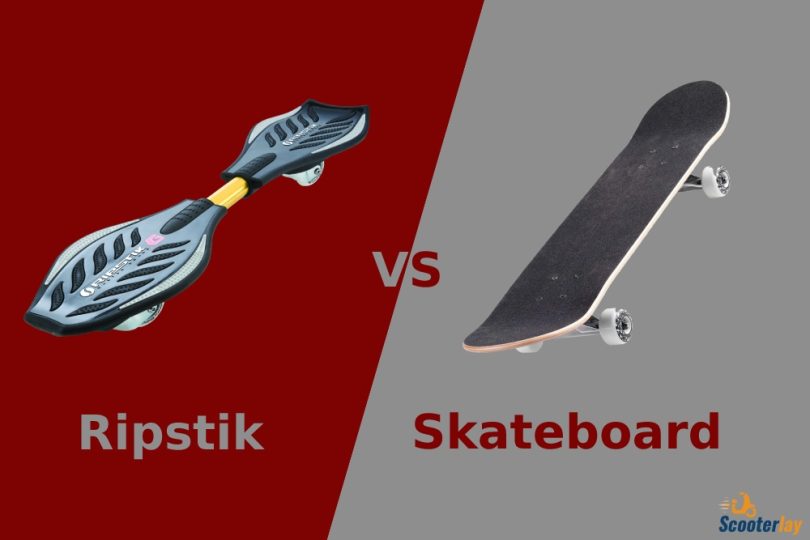
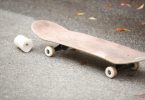
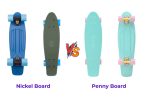
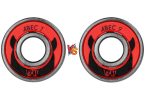
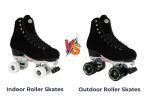
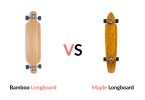
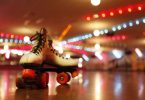

Leave a Comment